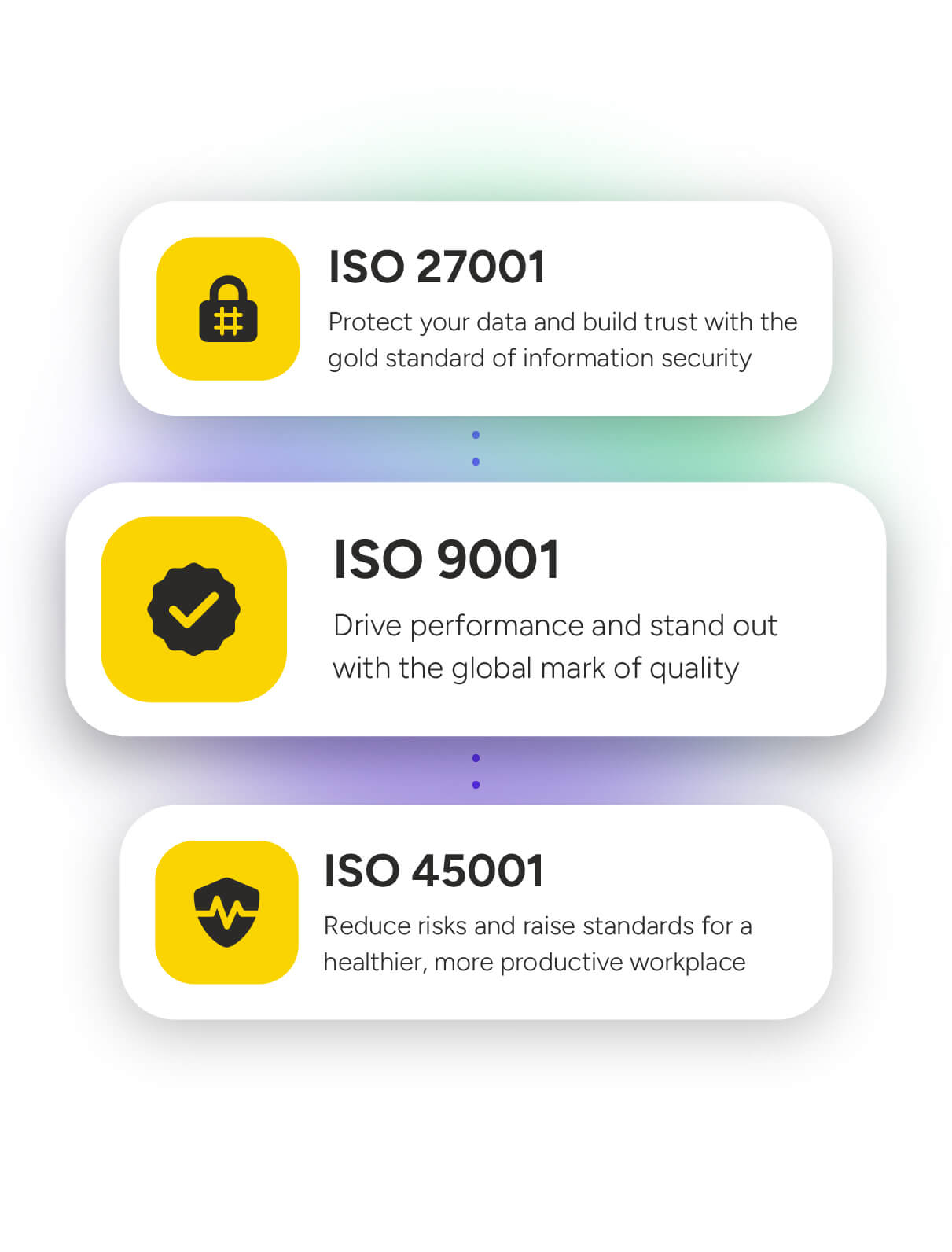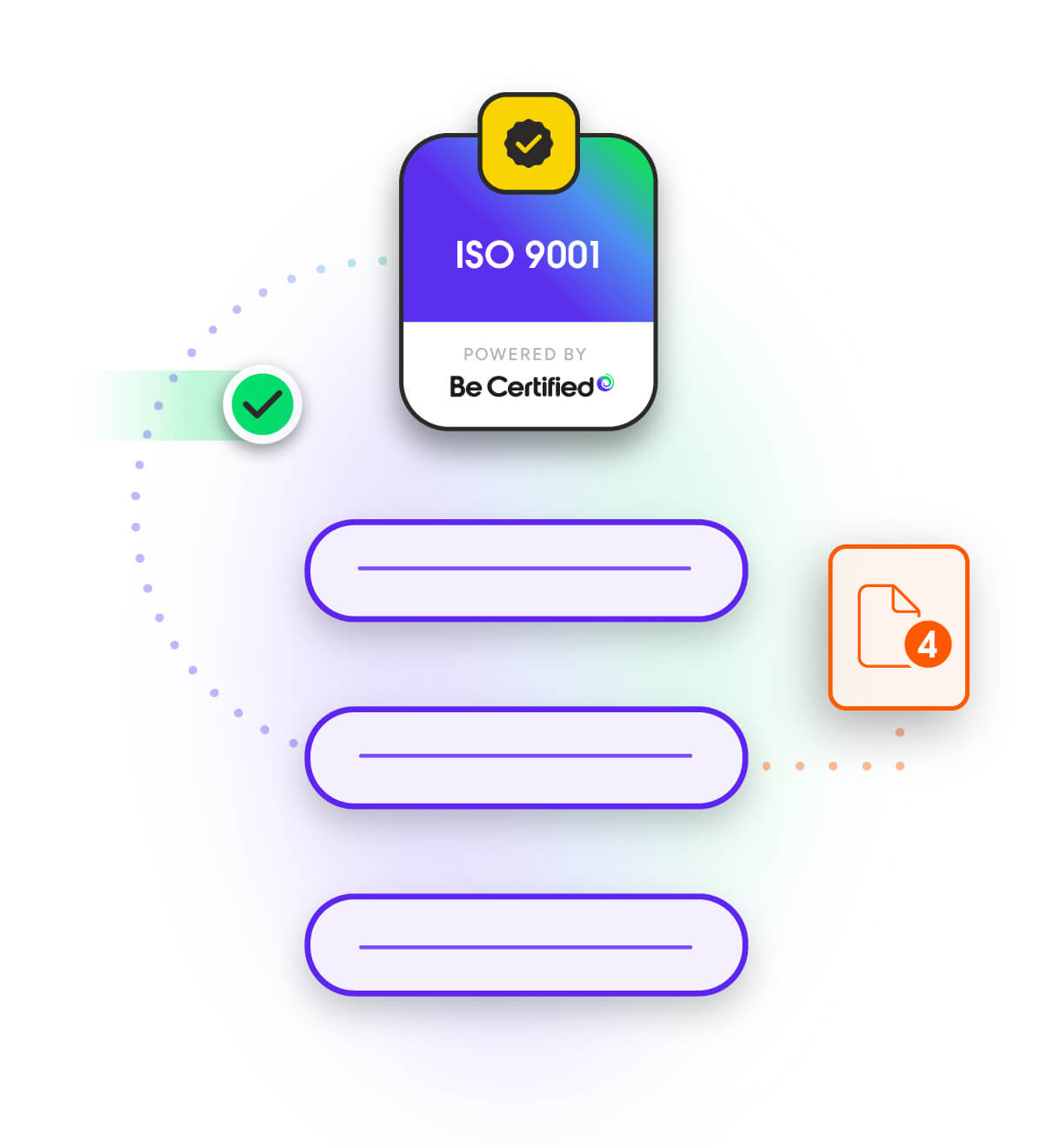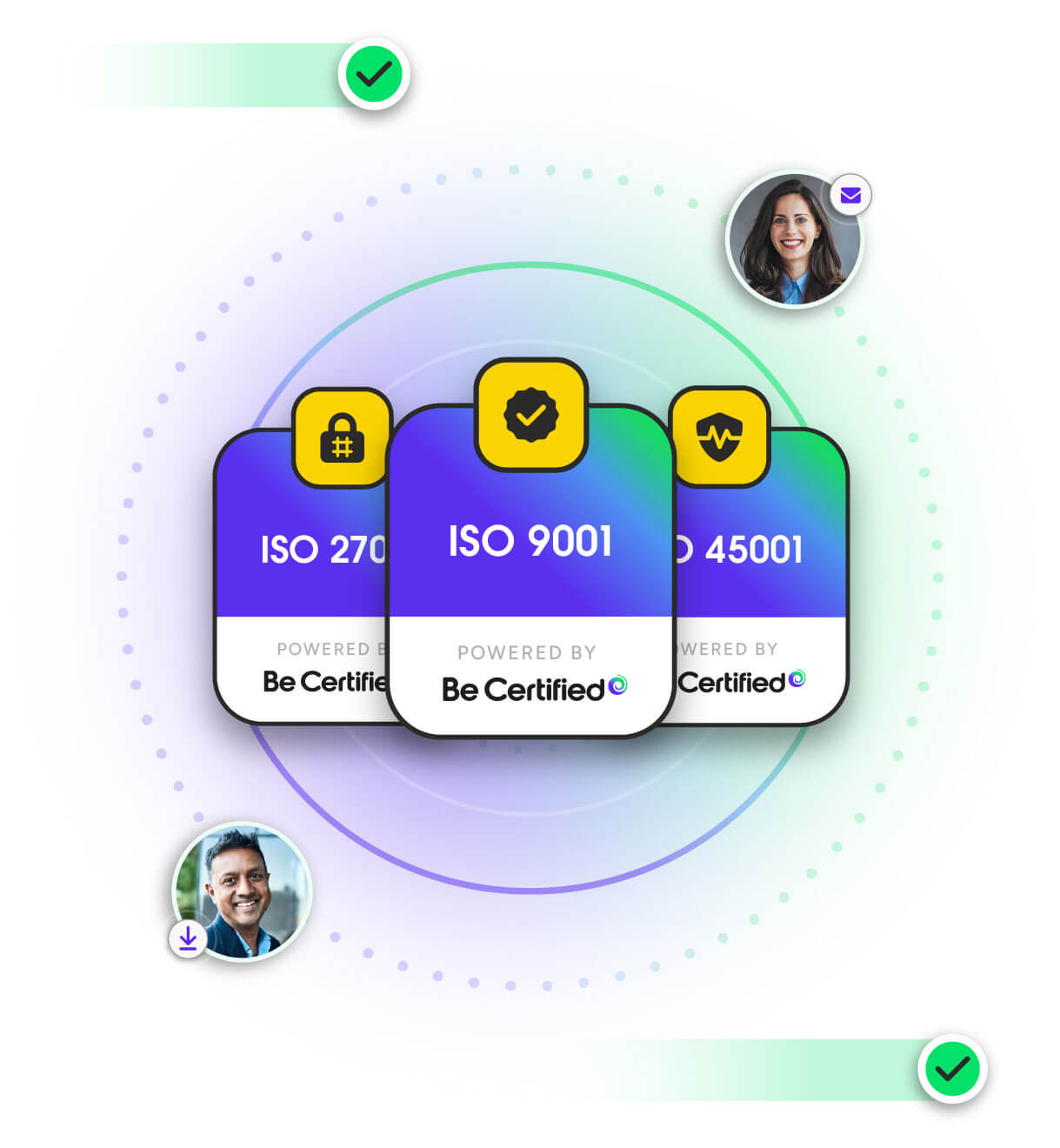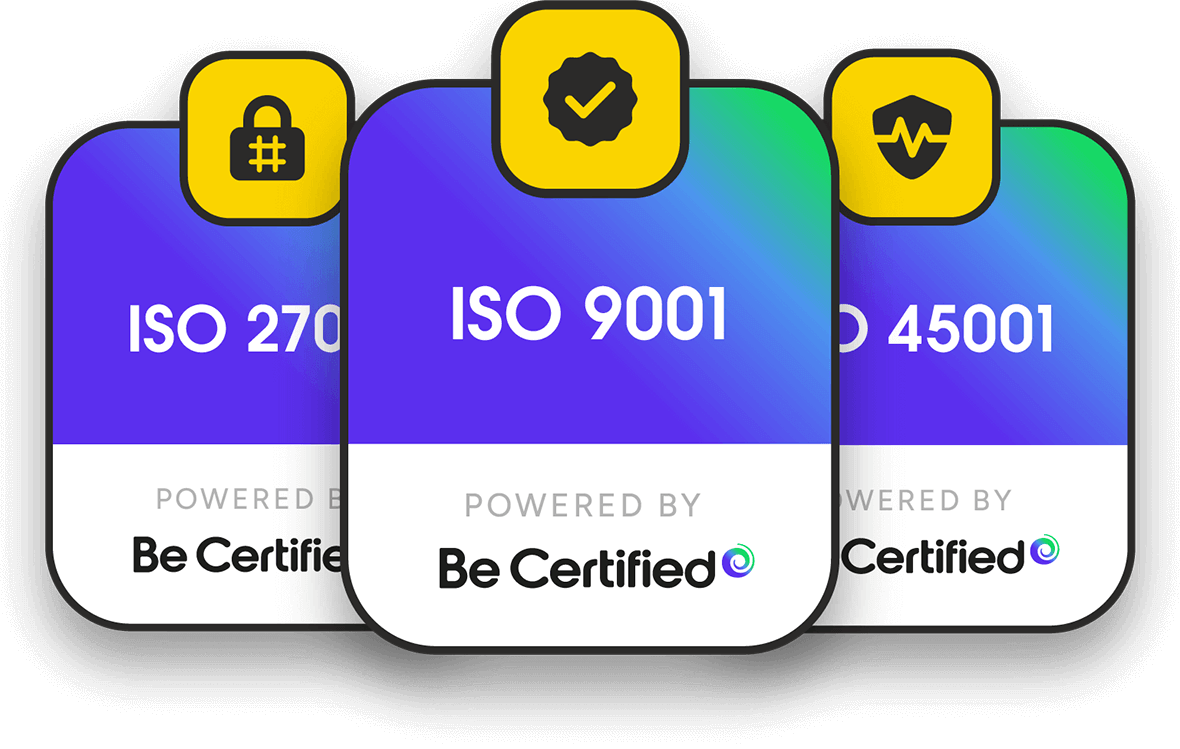What is ISO certification?
ISO certification is a seal of approval from an independent body that your business meets the Standards set by the International Organization for Standardization (ISO). These Standards help businesses improve things like quality, information security, Health & Safety, environmental performance — and much more. It shows your clients, partners, and regulators that you’re serious about doing things properly.
Why does this matter?

Build trust
Show clients, customers, and partners you’re committed to best practice.

Win new business
ISO certification is often a must-have for tenders and contracts.

Work smarter
Standards help you run your business more efficiently.

Stay compliant
Many ISO Standards support legal and regulatory compliance.
Now that you know why ISO certification is valuable, let’s explore how to achieve it step by step
How to achieve ISO certification
Every certification journey is slightly different depending on the Standard and your business. But here’s a good idea of what you can expect:
Step 1: Understand the Standard and what’s required
The first step is getting to grips with the ISO Standard that’s right for your business. Each one outlines best practices for a specific area — like ISO 9001 for quality management, or ISO 27001 for information security.
Every ISO Standard has its own set of requirements. But many of the most widely used — like ISO 9001 and ISO 45001 — follow the same structure: 10 key sections, or ‘clauses’ as they’re known. The first three set the context and definitions, while the remaining seven outline the core requirements your business needs to meet.
These are essentially a checklist of things your business needs to have in place to meet the Standard.
One of the core requirements of ISO 9001 is Clause 9 — Performance Evaluation. This means you need to monitor things like customer satisfaction and internal processes. To meet this, you might carry out regular customer surveys and track key quality metrics — showing that your business takes performance seriously.


Step 2: Carry out a gap analysis
Now it’s time to look at where your business is right now versus where it needs to be. A gap analysis helps you document what you’re already doing well, and spot where you need to make improvements.
- Do we already meet some of the requirements?
- What changes do we need to make to meet the requirements?
- Who will be responsible for managing these improvements?
Once you’ve pinpointed the gaps, it’s time to fill them in.
Let’s say you’re working towards ISO 45001 for Health & Safety management. During your gap analysis, you might find that while you have basic safety procedures in place, you don’t have a formal risk assessment process documented. To address this, you could create a risk assessment template, train your team on how to use it, and put regular reviews in place to make sure workplace hazards are identified and avoided. This would help you meet the Standard’s requirements for proactive risk management.
Here’s what might go into your action plan:
- Clear goals for meeting the ISO Standard.
- A timeline (because nobody likes an endless project).
- Responsibilities assigned to team members who will tackle each task.
This step focuses on bridging the gap between where you are now and where you need to be for certification.
Step 3: Get your systems in place
Next, you’ll need to put your plan into action by setting up the right processes, policies, and records to meet the Standard. This is called your “management system”, and is where having a platform like Be Certified is essential.
It might include things like risk assessments, staff training records, or a quality policy — all tailored to the certification you’re going for.
But it’s not just about having these documents. You’ll need to show you’re actively following the systems you’ve put in place. This means:
- Rolling out changes across your business.
- Keeping records up to date so you can prove compliance.
- Engaging your team to make sure everyone’s on board.
Before you bring in an external certifying body, do a practice run. Internal audits help you check if you’re on track, make sure everything is running smoothly, and give you the confidence you’re ready for the official audit.


Step 4: The certification audit
Once you’ve got everything in place, it’s time for the certification audit. This is where an independent certification body reviews your business to see if it meets the ISO Standard.
Stage 1 – A review of your documents and plans: The auditors will review your management system, policies, and records to make sure they align with the requirements of the Standard.
Stage 2 – A closer look at how your business operates: The auditors look at whether your systems are being followed in practice and if your team is complying with the processes you’ve put in place.
If you meet the requirements, you’ll be officially ISO certified! If there are areas to improve, the auditors will provide feedback so you can make adjustments before certification is granted.
Keep it going
ISO certification isn’t a one-time thing. To keep your certificate valid, you’ll have regular check-ins (called surveillance audits) — usually once a year. Every few years, there’s a full reassessment.
Ready to explore ISO certification?
Hopefully, this page has shown you that ISO certification isn’t as daunting as it might seem. If you’re unsure where to start, don’t worry. With the right guidance, it’s a smooth and worthwhile journey — one that can open doors and strengthen your business from the inside out.
Discover how Be Certified can help
Be Certified is your step-by-step toolkit for building and maintaining your ISO management system. It breaks down each requirement of the Standard in plain English — no jargon, no guesswork — and gives you the tools and templates to put everything in place. You’ll get built-in guidance, clear explanations, and a system you can shape around your business. It’s the smart, simple way to get audit ready with confidence. And when you’re ready, you can choose who you’d like to certify with. It’s the platform that puts you in control. Fancy a closer look? Simply get in touch for a free demo of our platform.

